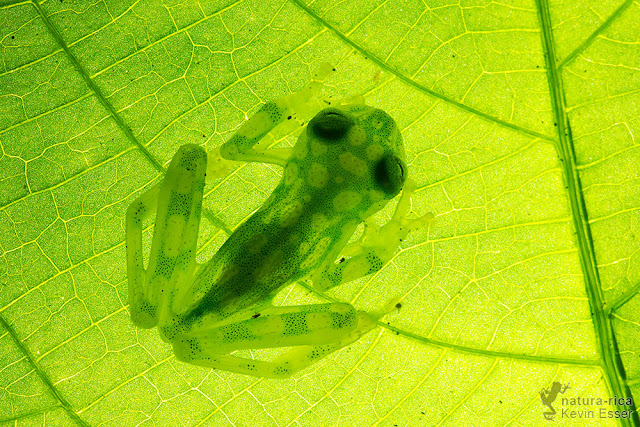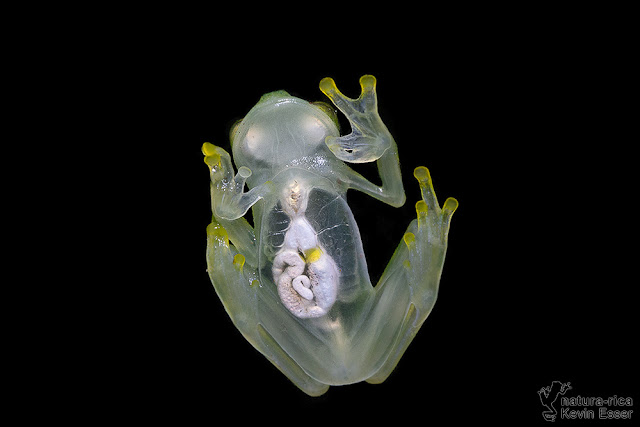Members of the amphibian family Centrolenidae (order Anura) appear only in Central and South America. While the general background coloration is primarily lime green, the abdominal skin of some species is transparent. The internal viscera are visible through the skin. That's why they are called glass frogs. Glass frogs are aboreal and measure only 2 - 3 cm (0.8 - 1.2 in).
For a long time I wanted to show the phenomenal details of a glass frog. Now I finally had everything I needed: camera, tripod, plastic lid and most importantly... the glass frog itself. During a night hike along a river I was able to discover a Reticulated Glass Frog (Hyalinobatrachium valerioi).
Since I was traveling alone, nobody could assist me and there was not any well-planned set up. So I had to improvise: I put two thin branches on a root so they could hold a leaf. I put my flashlight under the leaf to take a picture of the shine-through frog.
Even more spectacular is probably the abdominal view of the frog. To get this picture, I carefully made the frog climb on a transparent plastic lid. I put the plastic lid on a plant so that I had a clear view of the frog past the leaves. From a low angle, I photographed the transparent frog from below.
I also took a "regular" picture. Compared to the other two, it was easy to take this one. But it is also very important to show you the beauty of this amazing amphibian.
I had to take the "making of" pictures with my cell phone. This is quite old and therefore the quality is unfortunately pretty low. Very important: I have made all manipulations of the frog very carefully in order not to harm the frog! During the strenuous shootings, I sweated a lot and ate accidentally a dozen mosquitoes, but I am very happy with the result.





Super, die Präsentation des Glasfrosches. Außerdem gefällt mir, dass man auch die Informationen über das "WIE war die Fotografie so möglich" bekommt.
ReplyDeleteVielen Dank für das Teilhaben-Lassen, Kevin, und einen dicken Glückwunsch!
ReplyDelete